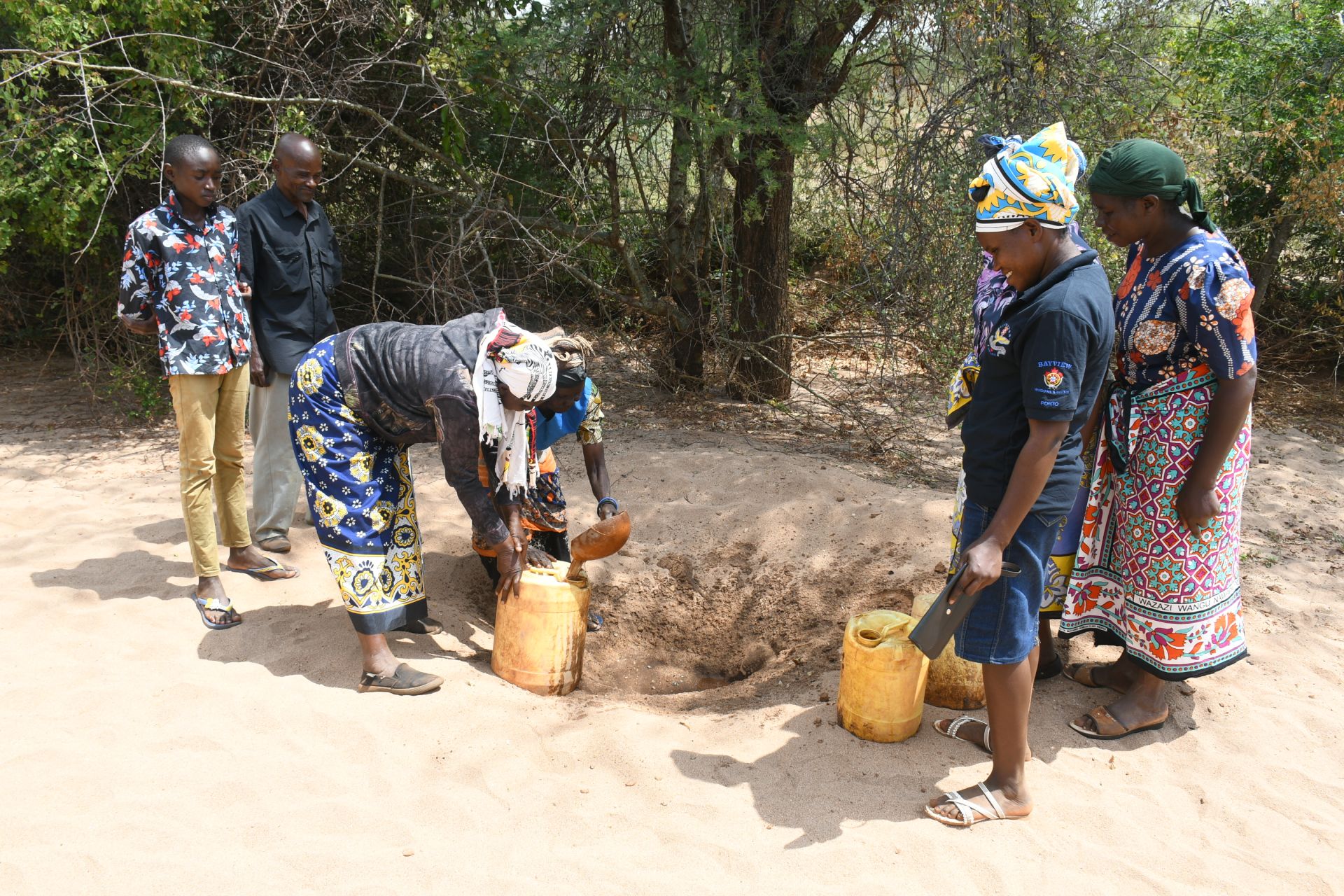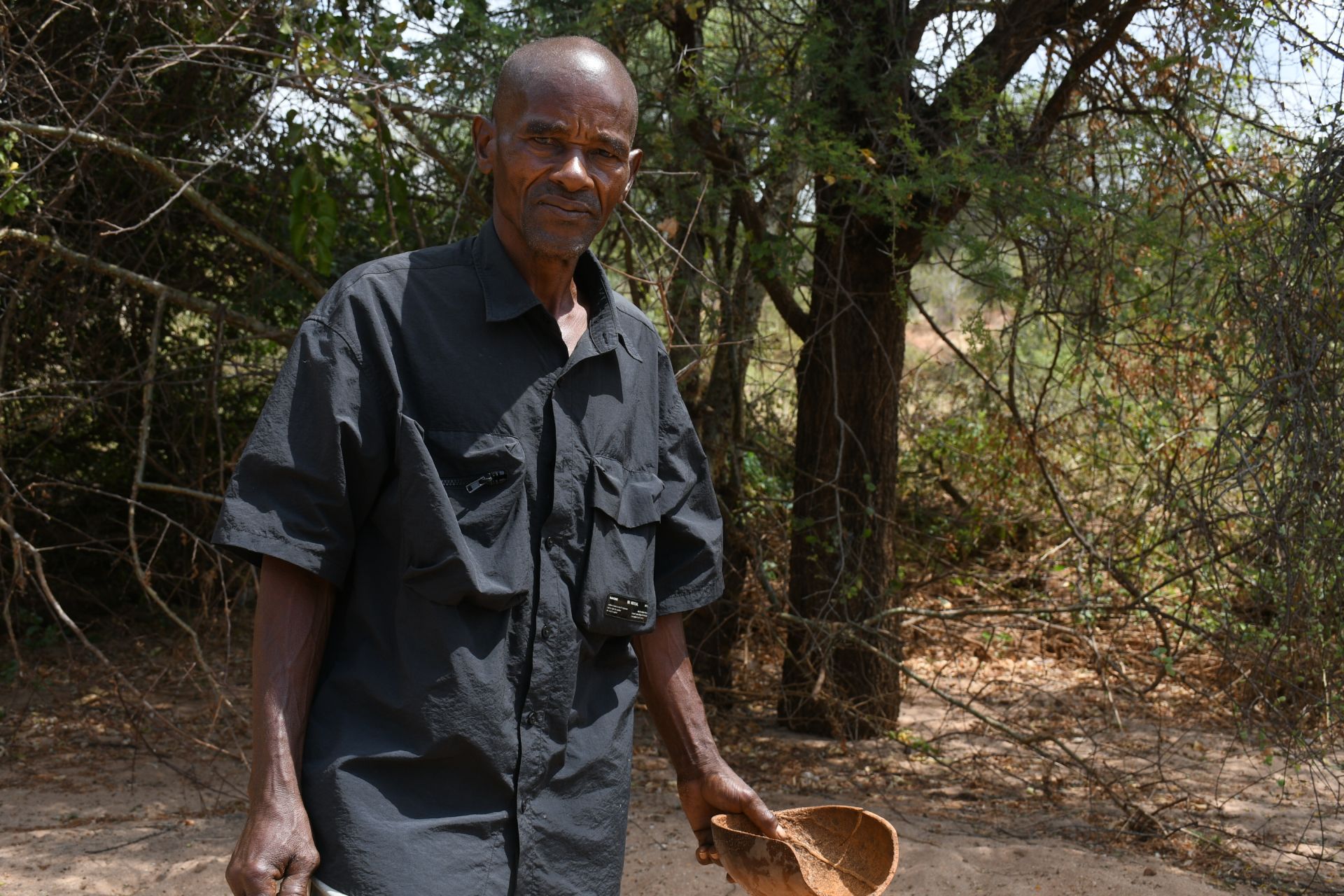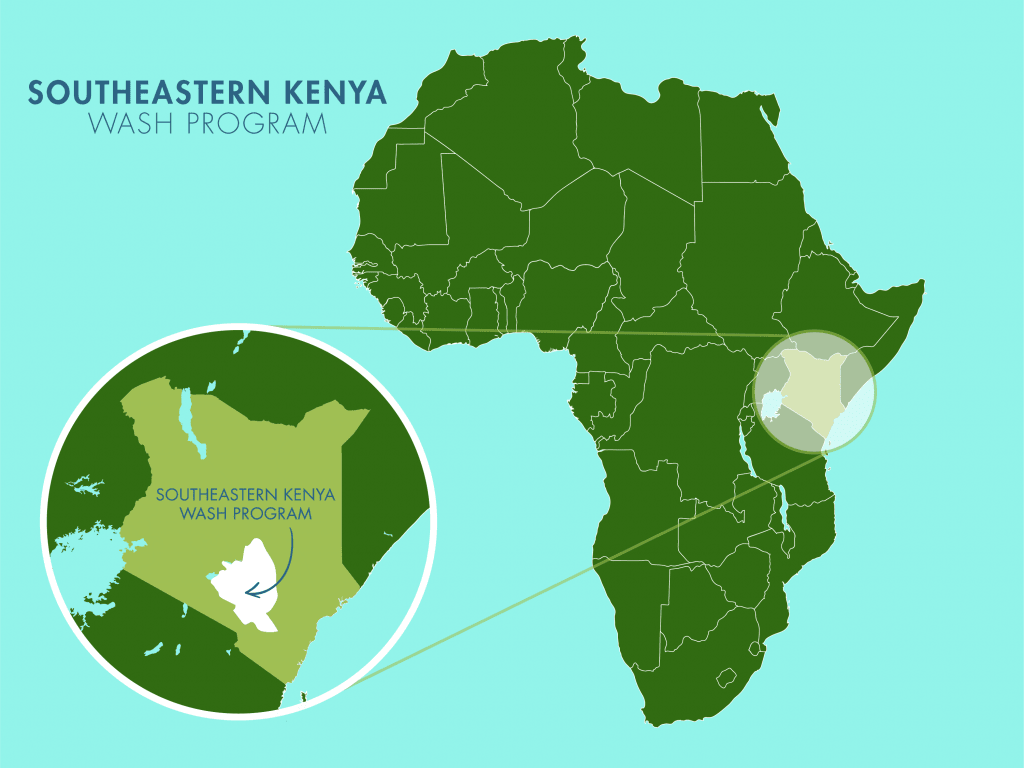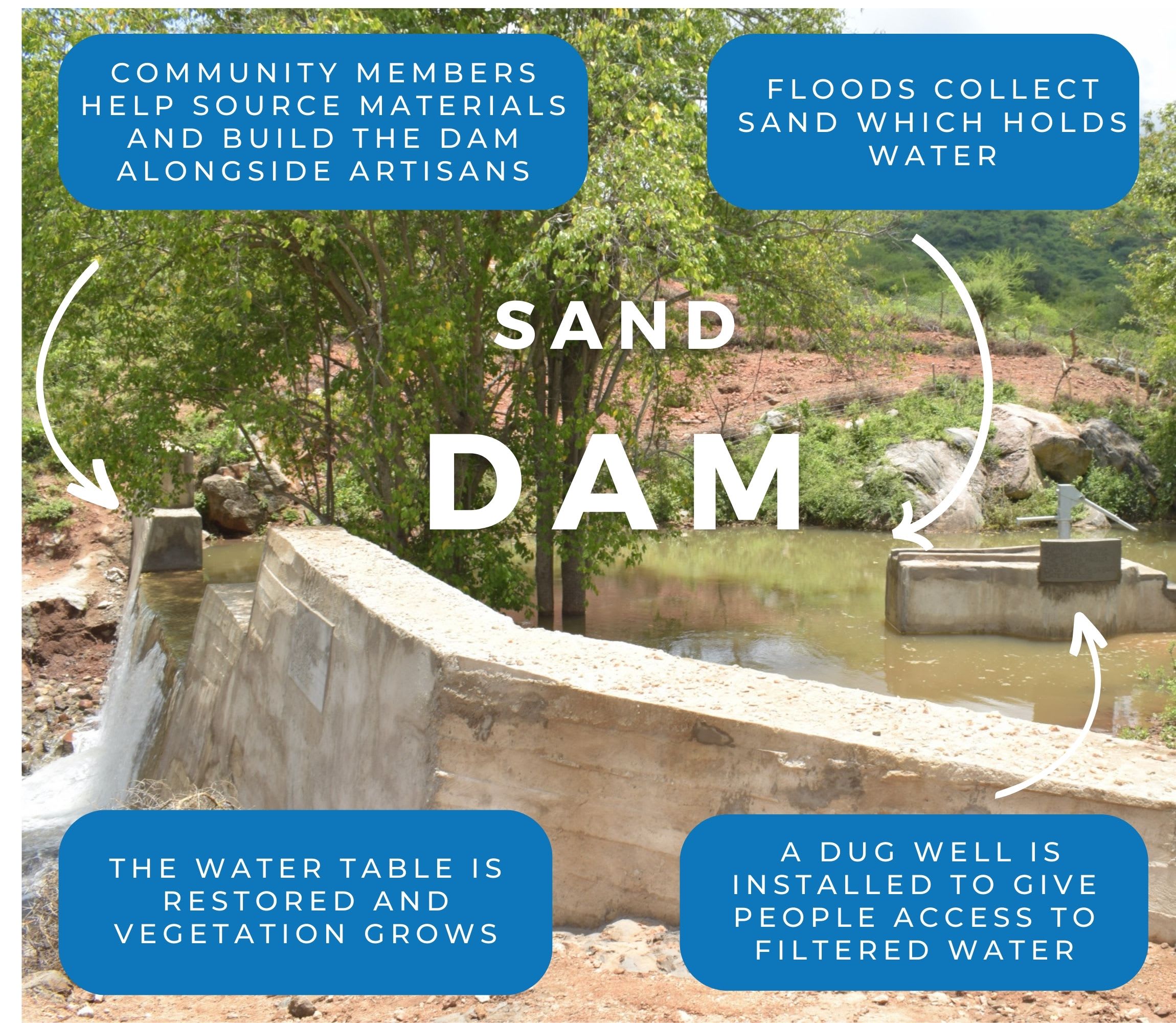The expansive community of Kanywa Mbithi has 1,500 residents who daily struggle to find and collect sufficient water to meet their needs. The scoop holes in a dry riverbed, which they rely on for water, are far away, requiring some community members to collect water for up to four hours, and worst of all, the water is inevitably dirty.

"Using the scoop hole is tedious and time-consuming because the community members have to walk several kilometers under the burning semi-arid sun. One has to wake up early to avoid the long queues only to return home in the afternoon. The water level drops and takes [a] long [time] to replenish itself during the drought period, which leads to long queues and overcrowding," shared Field Officer Alex Koech.
However, the exhausting and time-consuming trips to collect water bring even more dire consequences for those who consume the collected water.

The scoop hole.
"The scoop hole is open to various agents of contamination, such as animal waste, human activity, and dust, because it is shared with livestock that leave waste in or around the water source. Dust and debris easily enter the water source because of the open nature," he continued.
"The community members have mostly complained of water-related infections like typhoid, amoeba, and diarrhea after drinking water from the current sources. Hygiene-related infections like ringworms have also been reported," he reported.

Musyoki Mutemi.
Musyoki Mutemi, a 68-year-old farmer in the community, is well aware of the high costs of living without sufficient water.
"We live in a dry region that receives paltry rainfall amounts throughout the year, which makes our sources dry up or reduce in water supply. A lot of people also depend on these sources, and more people from other regions depend on these sources during peak drought periods," said Mr. Mutemi.
"I am mainly concerned about the water from the scoop holes because it is contaminated and exposes us to water-related infections like amoeba and typhoid," he continued.

But water-related illnesses are not the only threat to Musyoki. The limited amount of water he manages to collect is not enough to sustain his livelihood of farming. Without sufficient income, his family suffers and remains in a cycle of poverty.
"Without water in our community, life becomes very unbearable. I have to walk several kilometers for my goats and cattle to drink water, which affects their productivity. If there were enough water nearby, my animals would have better health, and I would sell my goats at a higher price to support my family during the drought period. It is difficult to conduct any farming in our village without enough water supply, forcing us to depend on drought-tolerant crops that at times might not do well," said Musyoki.
Musyoki has hope for the future. He said, "Availability of water will restore hope and promote growth in our village because we will now have time and water for farming, and our animals."
We plan to help by installing a sand dam and an accompanying well so he can access safe, sufficient water near his home.
Solving the water crisis in this community will require a multifaceted system that will work together to create a sustainable water source that will serve this community for years to come.
Steps Toward a Solution
Our technical experts worked with the local community to identify the most effective solution to their water crisis. Together, they decided to construct a sand dam and a protected dug well.
Sand Dam
Sand dams are sought-after, climate-smart, and lasting water solutions providing hope and resilience to communities in arid Southeastern Kenya. Think of them like giant sandboxes constructed in seasonal rivers that would typically quickly dry up after the rainy season. Instead of holding water like traditional dams, they collect sand and silt.
When infrequent rains do come, these dams catch a percentage of the river's flow, letting most of the water continue downstream to other communities. But here's the magic: the sand they collect acts like a natural filter, holding onto water long after the river's gone dry. Then, wells are constructed nearby, creating a reliable water source even during the driest times.
And the benefits don't stop there! In communities impacted by climate change, sand dams replenish groundwater and prevent soil erosion. Even during severe droughts, the consistent water supply from these sand dams allows farmers to thrive, giving way for enough food not only for their families but also to sell in local markets.
The most remarkable aspect of sand dams is how they involve the local community every step of the way, giving them a sense of ownership and pride in solving their own water shortage and managing their own water resources.
This sand dam will be connected to a protected dug well to make the water more accessible.
Community Education & Ownership
Hygiene and sanitation training are integral to our water projects. Training is tailored to each community's specific needs and includes key topics such as proper water handling, improved hygiene practices, disease transmission prevention, and care of the new water point. Safe water and improved hygiene habits foster a healthier future for everyone in the community.
Encouraged and supported by our team's guidance, the community elects a water user committee representative of its diverse members. This committee assumes responsibility for maintaining the water point, organizing community efforts, and gathering fees to ensure its upkeep.

 Sand Dam
Sand Dam
 Rehabilitation Project
Rehabilitation Project


















